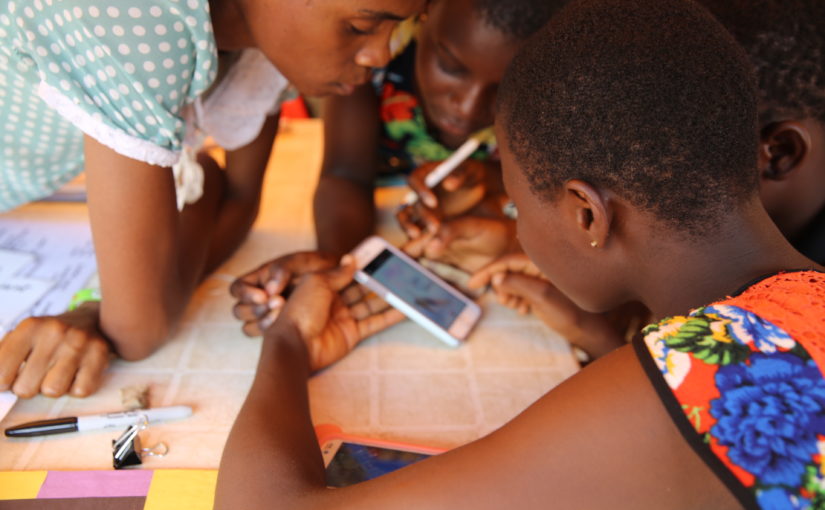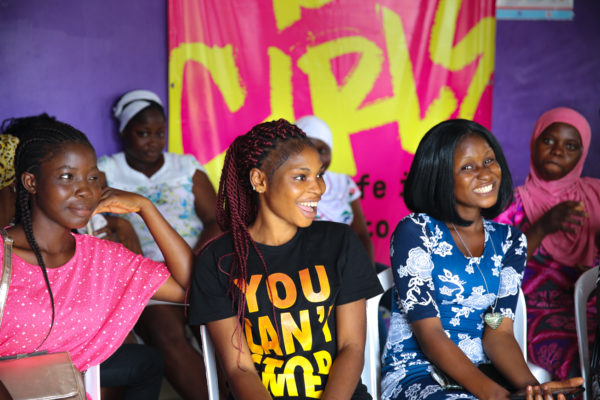CAN DEEP INSIGHT LEAD TO MORE EFFECTIVE ACTION?
A SERIES OF REFLECTIONS BY MANYA DOTSON, FORMER PROJECT DIRECTOR, ADOLESCENTS 360
For decades, public health professionals (myself included) have been trying to unlock the persistent challenge of connecting adolescent girls with sexual and reproductive health services. We want to ensure they have the choice to have a safe pregnancy and childbirth and the chance to achieve their dreams. And we’ve tried a lot of things for a lot of years in our efforts to get there. It’s a tough nut, and while we have made some key gains, we haven’t cracked that nut; unmet need for contraception among girls ages 15-19 in sub-Saharan Africa is currently sitting at 25%.
To meet this need, the Adolescents 360 (A360) project is attempting to reimagine and redesign health service delivery for adolescents in Ethiopia, Nigeria, and Tanzania. We’re using a marketing model that merges the rigor of public health, developmental science, and cultural anthropology, with the vigor of human centered design and youth engagement. Rather than starting with the needs of public health systems and actors and the philosophy of, “We know what’s good for adolescent girls,” our starting point has been to get a more empathetic understanding of what’s happening in the worlds of girls, and ask: “What is deeply desirable to young people?”
A search for inspiration and insights was the first leg of our journey. Over the next few weeks I will be sharing some reflections about that journey and what we learned along the way. Before we dive in, let’s start with the basics:
PART I: WHAT IS AN INSIGHT?
I was at the International Conference on Family Planning in 2016, and had just watched several presentations building the evidence-base for involving men in contraceptive programming. There was data galore, and the audience’s questions were filled with jargon as we grappled with lofty issues such as agency, self-determination, and gender-equity.
And then a woman stood up and said this: “Here’s the bottom line: I don’t trust men, but I trust my man.” An audible rumble passed over the room, as women of all ages and nationalities nodded in agreement. I left the room with a better, more empathetic understanding of why working with men is important. It was a great example of gaining insight.
In the Adolescents 360 project, we believe that one of the reasons that we, as a public health community, fail to meet the contraceptive needs of adolescents is because we need to get to a deeper, more empathetic understanding of girls today. As a public health community we have a lot of data about why girls don’t use contraceptives, but at A360 we believe that deeper insight into girls and their lives is the key to unlocking truly breakthrough solutions. But what is an insight?
The simplest definition of the word “insight” is probably this one straight from Google: “A deep understanding of a person or thing.” What I’ve learned through A360 is that while you might know an insight when you see one (and I even get goosebumps!), insight is anything but simple. How do you know when you’ve found one?
Sometimes an insight is a novel connection that helps us see an old piece of knowledge in a new way. “I don’t trust men, but I trust my man,” is a good example of this. Sometimes it’s a revealing tension like, “School might lead to better opportunities, but it also increases a girl’s exposure to risk because school is in the city—and it makes it harder for her to make a good marriage.” It can also be a surprise: “I’m not using contraceptives because I’m not sexually active. He is the one who is having sex with me!” And sometimes it’s something that’s not surprising to us at all: “I feel too embarrassed to go to the clinic near my house—my mom’s friends go there and they will talk!”
Insights can emerge as we comb through piles of data, looking for connections and patterns. For example, in Nigeria, unmarried adolescent girls who are using modern contraceptives are mostly using EC and condoms—a reflection of the haphazard nature of unmarried teen sexuality. Or insights can come from something we observe, or experience, or because one person says something striking. “If I use the pill my boyfriend will think I like sex and want more of it. I don’t.” Insights can even come to us through compelling stories or a turn of phrase or a common saying in a culture “When I become a mother I will be respected here. They will call me the mother of my child’s name. I love being a girl because I get to be a mother!”
In A360 we welcome insight from all of these sources, and we have come to define it as an emotional or intuitive understanding of an issue that moves and inspires us to try new things. Whether you call attribute the discovery of insight to keen analysis, intuition, or even “magic,” to us, an insight is knowledge PLUS—and we are using our insights to spark creativity.
Insights about insights:
- Insights have a shelf life. Insights feel novel for a while—until they become outdated or common knowledge. From there they can become fact, or truth, or even cliché. But old news—like the fact that girls really crave a personal connection with an empathetic health care provider who won’t judge them and keeps their secrets—is still really important news, and it merits rediscovery.
- Insight is in the eye of the beholder. What may blow your mind may be very obvious to someone else. Our culture shapes the way we see the world in ways that may be hard for us to even know! And just because an idea isn’t mind blowing, doesn’t mean it isn’t very important and an insight.
- Framing is everything. Sometimes the difference between a piece of data and an insight is a story. Or a metaphor. Or a turn of phrase. If we want the data we already have to inspire breakthrough solutions, we must frame it in a way that gets people to empathize with the people behind the data.
The next posts will share some of the insights that A360’s field teams have discovered over the last few months: about adolescent girls, about the process of looking for insights and inspiration, and insights about insights themselves. Stay tuned!
In the meantime, we’d love to hear your thoughts. What do you think an insight is? How does insight differ from data? Where does insight come from? Have you ever had a flash of insight about contraceptives for young people? Comment below or share your thoughts on social media and use the hashtag #adolescents360.





